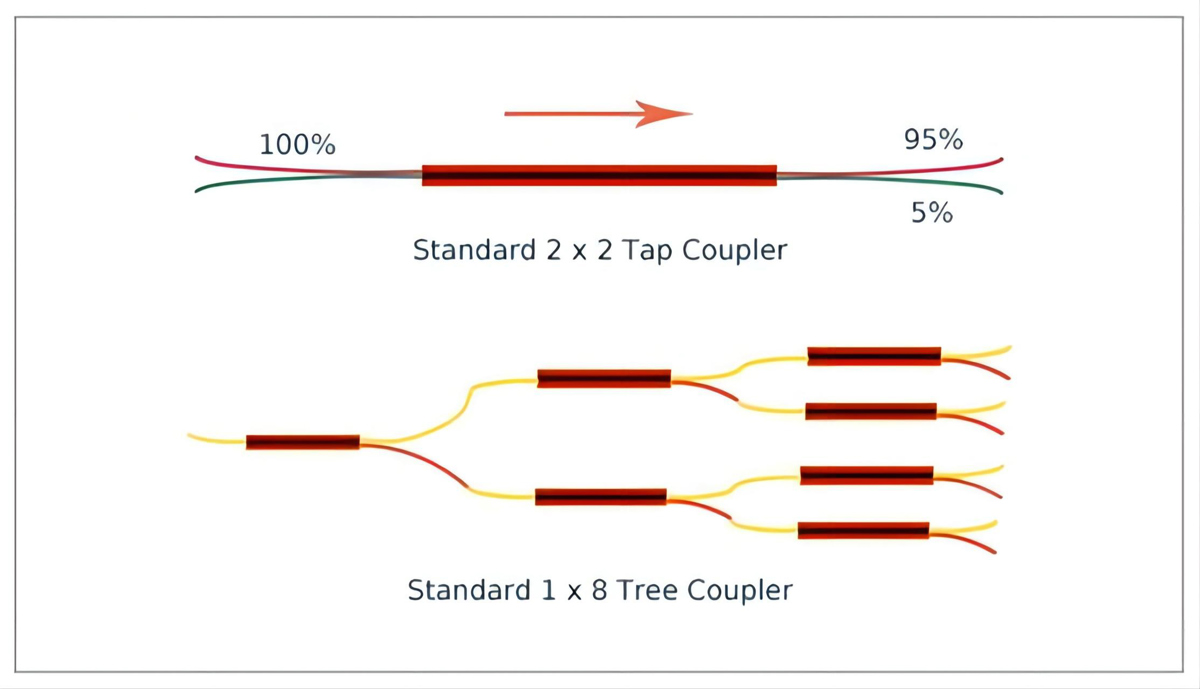A fiber optic splitter is an essential passive device in telecommunications, capable of distributing a single light signal into multiple beams. Two primary splitter technologies dominate the market: Fused Biconical Taper (FBT) and Planar Lightwave Circuit (PLC). This guide explores their differences to help you select the appropriate splitter for your application.
PLC Splitter: Precision and Performance
Technology: Utilizes planar lightwave circuit technology for precise signal splitting.
Layers: Comprises a substrate, waveguide, and lid for controlled light passage.
Split Ratios: Available in various configurations such as 1:4, 1:8, up to 1:64.
Wavelength Range: Operates across 1260nm to 1650nm, suitable for multiple wavelengths.
Uniform Splitting: Ensures equal distribution across all outputs.
Compact Design: Small form factor for space-efficient installations.
Stability: Reliable performance across different network sizes.
Complex Production: Involves intricate manufacturing processes.
Cost: Typically more expensive than FBT splitters for smaller split ratios.
High-Density Networks: Ideal for large-scale deployments requiring uniform distribution.
Data Centers: Compact design fits well in confined server rooms.
FBT Splitter: Cost-Effective and Customizable
Technology: Traditional fiber fusion technique creating a biconical taper.
Protection: Fused fibers encased in a glass tube for durability.
Cost-Effective: Made from readily available, low-cost materials.
Customizable Ratios: Allows for specialized configurations like 1:3, 1:7, 1:11.
Limited Wavelengths: Functions only at 850nm, 1310nm, and 1550nm.
Temperature Sensitivity: Higher loss and potential for failure in extreme temperatures.
Small-Scale Networks: Perfect for cost-sensitive or less complex network architectures.
Short-Distance Transmission: Effective for applications requiring short-range signal distribution.
Comparative Analysis
FBT: Limited to three wavelengths.
PLC: Broader range suitable for diverse applications.
FBT: Customizable up to 1:32.
PLC: Standard ratios up to 1:64, or 1:128
FBT: Uneven distribution may affect transmission distance.
PLC: Consistent splitting for reliable performance.
FBT: Higher rate with increased splits, especially over 1:8.
PLC: Lower failure rate due to precise manufacturing.
FBT: Operates between -5 to 75℃.
PLC: Wider range of -40 to 85℃ for extreme climates.
FBT: Larger and more affordable, suitable for less constrained spaces.
PLC: Compact and ideal for confined areas.
















